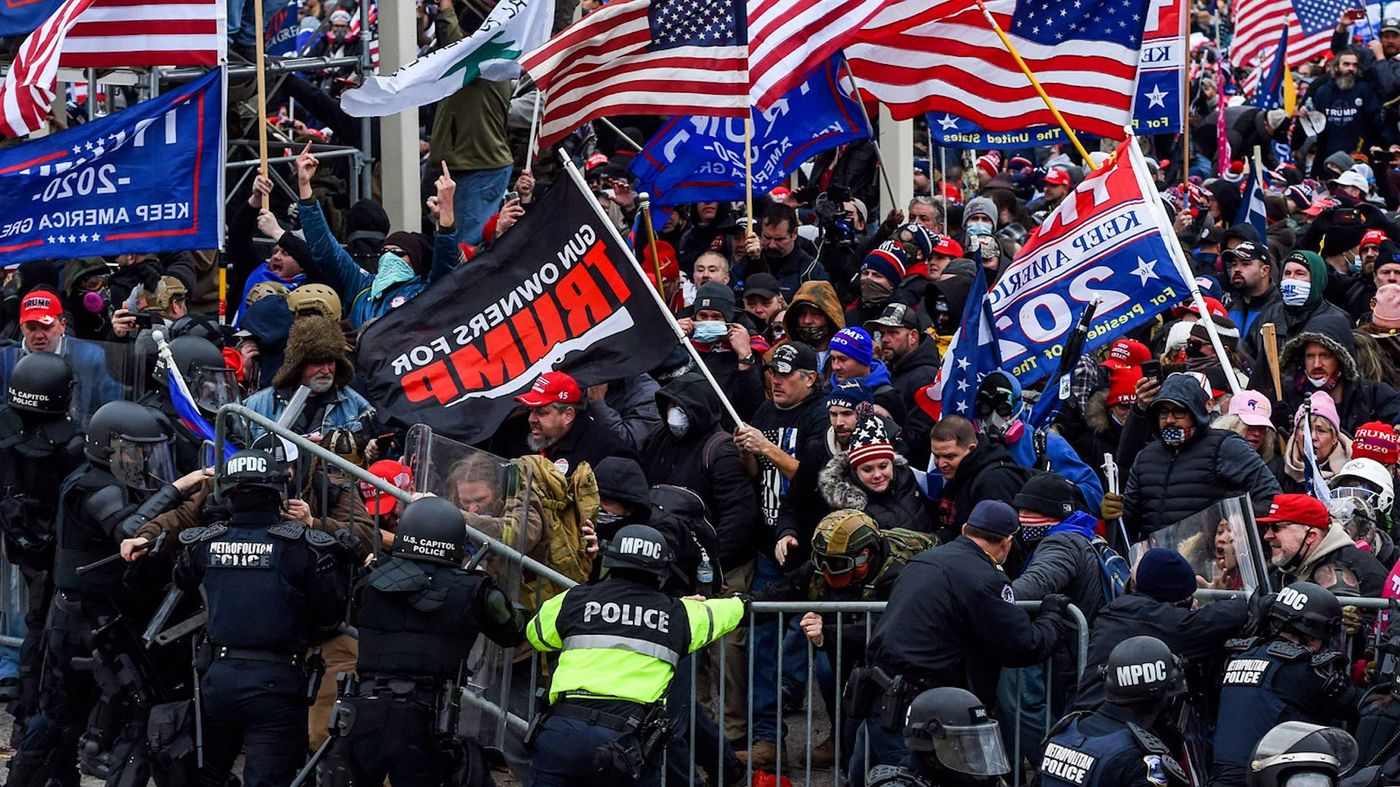
What happened on January 6, 2021, at the United States Capitol? On that day, a violent mob stormed the Capitol in Washington, D.C., aiming to disrupt the certification of the 2020 presidential election results. Supporters of then-President Donald Trump sought to overturn his defeat by halting Congress from counting Electoral College votes. The attack led to significant chaos, with rioters vandalizing property, clashing with law enforcement, and causing multiple deaths and injuries. Despite their efforts, Congress reconvened and certified President-elect Joe Biden's victory. The aftermath saw over 1,450 individuals charged, extensive investigations, and a nation grappling with the event's implications for democracy.
Key Takeaways:
- The January 6, 2021, attack on the United States Capitol was a chaotic event driven by supporters of then-President Donald Trump, aiming to overturn the 2020 election results and prevent the formalization of President-elect Joe Biden's victory.
- Despite the violence and damage caused, the attack ultimately failed to prevent the certification of the election results, leading to widespread public outrage and condemnation of the violence, while also highlighting deep political divisions within the country.
The January 6 Capitol Attack: A Day of Chaos
The January 6, 2021, attack on the United States Capitol was a shocking and unprecedented event in American history. It was a day filled with chaos, violence, and attempts to disrupt the democratic process. Here are 40 key facts about this significant event.
-
Date and Time of the Attack
The attack occurred on January 6, 2021, between approximately 12:53 p.m. and 5:40 p.m. (UTC-5). -
Location
The attack took place at the United States Capitol in Washington, D.C. -
Causes of the Attack
The attack was driven by supporters of then-President Donald Trump who sought to overturn the results of the 2020 presidential election. -
Goals of the Attack
The primary goal was to prevent Congress from counting the Electoral College votes, thereby stopping the formalization of President-elect Joe Biden's victory.
Methods and Results of the Attack
The attackers used various methods to achieve their goals, but their efforts ultimately failed. Here are some details about their tactics and the outcome.
-
Methods Used
Rioting, vandalism, looting, assault, and attempted bombing were employed to disrupt the proceedings at the Capitol. -
Result of the Attack
Despite the violence, the attack was unsuccessful in preventing the certification of the election results. Congress continued, and Joe Biden was formally certified as the winner.
Casualties and Injuries
The attack resulted in several deaths and numerous injuries. Here are the details.
-
Casualties
Six deaths were attributed to the attack, including one person shot by Capitol Police and four others who died from natural causes or drug overdoses. Four officers later died by suicide. -
Injuries
Many people were injured, including 174 police officers, with injuries ranging from minor to severe.
Legal Actions and Investigations
The aftermath of the attack saw numerous arrests, charges, and ongoing investigations. Here are some key points.
-
Charges Filed
Over 1,450 individuals have been charged in connection with the attack, including former President Donald Trump who faced impeachment charges. -
Investigations
The Department of Justice (DOJ) and the FBI have been leading the investigations, actively pursuing charges against those responsible.
Financial and Public Impact
The attack caused significant financial damage and had a profound impact on the public. Here are some insights.
-
Damage Caused
The damage exceeded $2.7 million, reflecting extensive vandalism and destruction of property at the Capitol. -
Public Assistance
Citizens from around the country have provided invaluable assistance in identifying individuals involved in the attack.
Timeline of Events
The attack unfolded over several hours, with key events marking the progression of the chaos. Here are some critical moments.
-
2:00 – 2:12 p.m.
Yogananda Pittman, the Capitol Police’s assistant chief for protective and intelligence operations, orders a lockdown of the Capitol building. -
2:01 p.m.
Chief Sund calls House Sergeant at Arms Paul Irving. -
2:03 p.m.
Donald Trump has an 8-minute call with Rudy Giuliani. -
2:05 p.m.
Protester Kevin Greeson dies after suffering a heart attack outside the building. -
2:06 p.m.
Rioters continue to push toward the building, reaching the Rotunda steps. -
2:07 p.m.
Chief Sund calls Sergeant at Arms Irving, who approves Sund’s request for National Guard support. -
2:10 p.m.
Rioters breach the final barricade on the West Front and northwest side of the Capitol, quickly approaching an entrance near the Senate chamber. -
2:11 p.m.
The first rioters gain access to the building. -
2:12 p.m.
Sen. Mitt Romney encounters Capitol Police officer Eugene Goodman running down a second-floor hallway outside the Senate chamber. Goodman tells him that rioters are near and he is safer inside. Romney returns to the Senate floor.
Leadership and National Guard Response
Leadership responses and the deployment of the National Guard were crucial in managing the crisis. Here are the key actions taken.
-
Leadership Response
Yogananda Pittman ordered a lockdown of the Capitol building, while Chief Sund requested National Guard support and coordinated with other officials. -
National Guard Deployment
The deployment was crucial in restoring order. At 2:07 p.m., Chief Sund called Sergeant at Arms Irving, who approved the request for National Guard support. By 2:10 p.m., Paul Irving and Michael Stenger issued an emergency declaration and formally approved the request.
Public Reaction and Media Coverage
The public reaction was widespread and varied, and media coverage played a significant role in documenting the events. Here are some insights.
-
Public Reaction
Many citizens expressed support for law enforcement and condemned the violence, while others defended the actions of the rioters, highlighting deep political divisions. -
Media Coverage
Media coverage was extensive, with The New York Times conducting a visual investigation titled “Day of Rage: How Trump Supporters Took the U.S. Capitol” and PBS airing documentaries like “Democracy on Trial” and “Plot to Overturn the Election.”
FBI Efforts and Public Assistance
The FBI has been actively seeking information related to violent activity at the U.S. Capitol, with significant public assistance. Here are some details.
-
FBI Efforts
The FBI has identified several suspects and continues to seek public tips to identify or locate these individuals. -
Arrests and Charges
More than 1,424 defendants have been charged in nearly all 50 states and the District of Columbia, with approximately 510 defendants charged with assaulting, resisting, or impeding officers or employees. -
Sentencing
Approximately 884 defendants have had their cases adjudicated and received sentences for their criminal activity on January 6, with 541 sentenced to periods of incarceration.
Government Response and Continued Investigations
The government has been actively responding to the attack, with ongoing investigations and prosecutions. Here are some key points.
-
Government Response
The U.S. Attorney’s Office for the District of Columbia and the FBI’s Washington Field Office have been leading the investigation and prosecution of those responsible. -
Continued Investigations
The Department of Justice’s resolve to hold accountable those who committed crimes on January 6, 2021, has not waned, with investigations and prosecutions continuing at an unprecedented speed and scale.
Financial Losses and Public Assistance
The attack resulted in significant financial losses and ongoing public assistance in identifying suspects. Here are some details.
-
Losses Suffered
As of October 14, 2022, the approximate losses suffered as a result of the siege at the Capitol totaled $2,881,360.20. -
Public Assistance in Identifying Violent Offenders
The FBI is seeking public tips to identify or locate violent offenders, including several individuals shown on video charging at and assaulting officers.
FBI’s Public Tips Line and Supporting Material
The FBI continues to seek public help in identifying suspects, with supporting material available for those interested. Here are some key points.
-
FBI’s Public Tips Line
Anyone with tips can call 1-800-CALL-FBI (800-225-5324) or visit tips.fbi.gov to provide information. For images and video of the attackers, visit https://www.fbi.gov/wanted/capitol-violence. -
Supporting Material
Supporting material from the January 6 Select Committee includes the Final Report (December 22, 2022) and various other documents related to the investigation.
Criminal Charges and Assaults
The attack led to numerous criminal charges and assaults on police officers and media members. Here are some details.
-
Criminal Charges
Approximately 452 defendants have been charged with assaulting, resisting, or impeding officers or employees. -
Assault on Police Officers
Approximately 140 police officers were assaulted on January 6 at the Capitol, with about 80 from the U.S. Capitol Police and about 60 from the Metropolitan Police Department. -
Assault on Media Members
Approximately 11 individuals have been arrested on charges related to assaulting a member of the media or destroying their equipment on January 6.
Public Assistance in Identifying Media Assault Suspects
The FBI is actively seeking public tips to identify or locate suspects wanted for assaulting members of the media. Here are some details.
- Public Assistance in Identifying Media Assault Suspects
The FBI continues to seek public help in identifying individuals believed to have committed violent acts on Capitol grounds. Photos and videos of suspects can be found at fbi.gov/capitolviolence.
Public Reaction and Media Coverage
Public reaction to the attack was widespread and varied, with many expressing outrage and condemnation of the violence, while others defended the actions of the rioters. The event highlighted deep political divisions within the country.
-
Public Reaction to the Attack
Public reaction to the attack was widespread and varied, with many expressing outrage and condemnation of the violence, while others defended the actions of the rioters. The event highlighted deep political divisions within the country. -
Media Coverage of the Attack
Media coverage played a significant role in documenting the events of January 6, 2021. Various news outlets, including The New York Times and PBS, conducted extensive investigations and aired documentaries about the attack.
Reflecting on January 6
The January 6 Capitol attack was a shocking event that exposed deep political rifts in the U.S. Supporters of then-President Trump stormed the Capitol, aiming to disrupt the certification of Joe Biden's election victory. Despite their efforts, Congress reconvened and confirmed Biden's win. The attack resulted in six deaths, numerous injuries, and over $2.7 million in damages. Law enforcement has charged over 1,450 individuals, with ongoing investigations and prosecutions. The FBI continues to seek public assistance in identifying suspects. This event highlighted the fragility of democracy and the importance of upholding the rule of law. The aftermath has seen a mix of public reactions, media coverage, and government responses, all contributing to a complex narrative that will be studied for years to come. The commitment to justice remains strong as authorities work to hold those responsible accountable.
Frequently Asked Questions
Was this page helpful?
Our commitment to delivering trustworthy and engaging content is at the heart of what we do. Each fact on our site is contributed by real users like you, bringing a wealth of diverse insights and information. To ensure the highest standards of accuracy and reliability, our dedicated editors meticulously review each submission. This process guarantees that the facts we share are not only fascinating but also credible. Trust in our commitment to quality and authenticity as you explore and learn with us.


